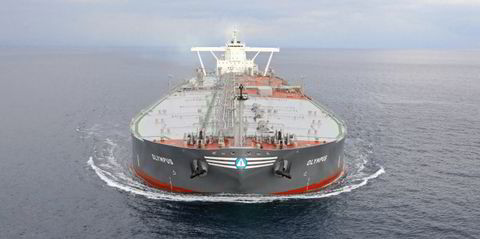Green ammonia produced from renewable power sources is a leading low-carbon fuel contender for shipping as it is reasonably energy-dense and a known commodity.
But its toxicity is a major concern, classed as potentially intolerable in a June report by the Together in Safety group that includes Lloyd’s Register, APM Terminals, Chevron, Euronav, AP Moller-Maersk, MSC Shipmanagement and Shell.
In the same week, a Bureau Veritas report, in collaboration with TotalEnergies, said ammonia presents “several safety challenges, which must be addressed before it can be used on board ships”.
In July, Japan’s ClassNK issued guidelines that said “adequate safety measures are required, as ammonia is highly toxic, and contact with the human body, even in trace amounts, can cause serious health damage”.
At the same time, an International Maritime Organization summary pointed to “ammonia leakage” being such a significant hazard that it will require in-depth amendments to the IGF Code for low-flashpoint fuels.
Among points it raised were that in certain areas, “safety measures against toxicity of ammonia may supersede those against explosivity”.
ClassNK said worst-case situations could arise from a fire close to an ammonia tank causing an increase in pressure that necessitates the operation of a pressure relief valve.
If piping is damaged or leaks occur in closed and semi-closed spaces, it would be necessary to remove the ammonia or absorb it in water spray before release into the sea.
Among those who have voiced concerns about using ammonia is Ardmore Shipping chief operating officer Mark Cameron, who told a recent Capital Link forum: “Let’s be honest. We can’t engineer out toxicity.”
He said too often this issue is being swept under the carpet in the hope it can be solved.
Bureau Veritas Maritime & Offshore’s vice president, technical, Olivier Cartier, who headed its report, believes technical issues can be addressed, but whether the risks associated with using ammonia as a marine fuel are worth taking “will basically depend on investment within the industry”.
He said the development of ammonia as a marine fuel is at about the same stage that LNG was in 2010, and it has only recently got to the point at which it is being used as a fuel.
“There are a lot of technical issues to address,” he added. “Toxicity to people is key. It is a new topic for fuel as it was not the case for LNG.”
Brian Johnson, chief executive of the UK Maritime & Coastguard Agency, warned last year that if ammonia were to be used to fuel a large container ship, which normally bunkers 5,000 tonnes of fuel oil, it would have more of the chemical on board than many onshore storage facilities: about 8,000 tonnes.
As a former manager of a hazardous chemicals site, Johnson said ammonia is tough stuff to handle: “At 0.2% in the air, you keel over and do yourself serious damage.”

The Bureau Veritas study involved assessing risks from leakage scenarios to see how ammonia behaved in an engine room, during bunkering, in fuel preparation and venting to the outside or in a fire.
Cartier said it validated the class society’s general rules, but highlighted issues that need more study.
These include the behaviour of cold ammonia clouds, which can develop over the sea after a leak. Critically, he said that makes the definition of safety zones very different from LNG in terms of the level of exposure that people can survive.
Ammonia has been used in refrigeration systems on deepsea fishing boats, but Cartier said rules governing this would need to be significantly upgraded for its use as a marine fuel.
Ammonia-burning engines are under development, but only small models are likely to be ready by around 2025.
Manufacturer Wartsila has noted that new materials will be needed.
“Nickel and copper found in seals, gaskets, valves and electrical components would corrode quickly once exposed to ammonia, for example, as would most elastomers,” Wartsila said.
ClassNK said the use of mercury, copper, copper alloys and zinc is out, as ammonia would corrode them, and cadmium is likely to be prohibited. Ammonia can also cause stress corrosion cracking in equipment made of carbon manganese steel or nickel steel.
Cartier stressed that the Bureau Veritas report is a preliminary study to point out where further research and design is needed.
“There is not currently a clear conclusion about how ammonia can be handled on ships,” he said.
The Class NK guidelines for the safety of ships using ammonia as fuel detailed important differences between different types of engines.
“Low-pressure four-stroke dual-fuel engines use a premixing lean burn system in which a gas fuel is mixed with the air supplied to the engine,” it said. “After this lean mixture is compressed, the mixture is ignited by pilot oil.”
This has the advantage of relatively low gas supply pressure but the disadvantage of unburnt gas being emitted as “ammonia slip”, ClassNK said. “High-pressure two-stroke dual-fuel engines use a diffusion combustion system of the type used in oil-fired diesel engines.
“After the scavenging process is completed, the ammonia fuel is injected directly into the compressed air and ignited by pilot oil.”
Advantages include no ammonia slip due to relatively stable combustion, but there are high pressures when the ammonia is supplied in a liquid state to the engine.






